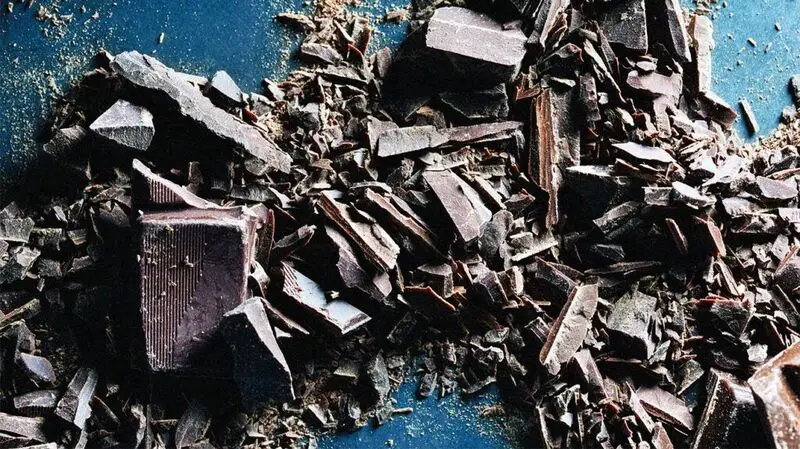
- Experts are interested in aspects of diet that can decrease someone’s chances of developing type 2 diabetes.
- A study examining the data of three cohorts suggests that eating dark chocolate may decrease type 2 diabetes risk, but eating milk chocolate does not offer similar protection.
- The research highlights the importance of dietary choices to disease prevention.
In 2022,
A study published in
Researchers found that participants who ate 5 or more servings of dark chocolate a week had a 21% decreased risk of developing type 2 diabetes.
Further research can confirm what this study found and seek to understand the reasons for the observations.
Researchers wanted to look more at the relationship between eating chocolate and risk for type 2 diabetes, as previous research has had inconsistent findings. They also wanted to look at the impact of subtypes of chocolate, as this has been lacking in previous research.
The current trial included a large amount of data from three cohorts: The Nurses’ Health Study, the Nurses’ Health Study II, and the Health Professionals Follow-up Study.
Researchers included data from 192,208 participants in the total chocolate intake data analysis, and 111,654 participants in examining chocolate subtypes.
For the primary analysis, researchers excluded participants who had baseline diabetes, cancer, or cardiovascular disease.
Each of the cohort studies assessed diet every four years through participants filling out food frequency questionnaires. Chocolate subtype information started being included in these assessments in 2006 and 2007.
The cohort studies also included information for several covariates, such as data on weight, alcohol intake, high blood pressure, and family history of diabetes.
Participants filled out questionnaires on covariates every 2 years. There was also regular follow-up regarding cases of type 2 diabetes that occurred, as well as follow-up on body weight.
The researchers found some interesting associations between chocolate consumption and other dietary choices. For example, milk chocolate was associated with other less healthy food choices like added sugar and processed meat.
Throughout the study follow-up, 18, 862 individuals developed type 2 diabetes.
In looking at overall chocolate consumption, researchers found that participants who consumed 5 or more servings of any chocolate in a week had a roughly 10% reduction in type 2 diabetes risk when compared to people who never or rarely ate chocolate. The relationship appeared to be non-linear.
However, when looking at chocolate subtypes, the benefits appeared to rest with dark chocolate over milk chocolate.
Participants who had 5 or more servings of dark chocolate each week were at a 21% reduced risk for type 2 diabetes. There was a 3% reduction per serving a week of dark chocolate. The observed relationship was linear.
Researchers found no significant association between milk chocolate intake and type 2 diabetes risk. Additionally, increasing milk chocolate intake was associated with weight gain.
Subgroup analyses suggested that participants with high-quality diets were most likely to benefit from type 2 diabetes risk reduction related to dark chocolate.
Study author Binkai Liu, a doctoral researcher at the Harvard T.H. Chan School of Public Health, explained to Medical News Today that:
“Our study highlights that regular consumption of dark chocolate is associated with a lower risk of developing type 2 diabetes, while milk chocolate does not show the same benefit. Eating more milk, but not dark chocolate was associated with gaining more weight over time. These findings suggest that the type of chocolate consumed plays a critical role, with dark chocolate offering potential metabolic benefits likely due to its rich flavonoid content.”
The study does have limitations. First, some data, like those on chocolate consumption, were collected through self-reports, which do not always accurately portray real-life consumption.
The study authors acknowledge the possibility of measurement errors in the food frequency questionnaires. There were differences in covariate data collection among the three cohorts, as well as the data points available for each cohort.
For example, one cohort had data on chocolate subtypes for three 4-year cycles, while the others only had one and two 4-year cycles, respectively.
Additionally, there were more women included in the analysis than men, as two of the cohorts were made up of women, while only one of the cohorts was made up of men. Most participants were white and over 50 years old at baseline, and all participants were medical professionals.
This means the findings cannot necessarily be generalized to other populations.
Participants actually had fairly low chocolate consumption compared to the national average based on data that researchers examined. This could have affected researchers’ “ability to assess the dose-response association at higher intake.”
There was significant heterogeneity in the results for the three cohorts, which also warrants attention. For example, there was no statistically significant reduction in type 2 diabetes risk linked to eating chocolate, dark or otherwise, in the Nurse Health Study cohort.
In contrast, the benefits of dark chocolate consumption were most pronounced in the Health Professional Follow-up Study cohort, which was all male participants.
Researchers acknowledge that confounding was possible. They were also limited by only having a small number of people in the higher chocolate consumption groups who developed type 2 diabetes.
The paper notes that this could have made it harder to detect more modest associations between eating dark chocolate and developing type 2 diabetes.
Finally, it is important to note that sensitivity analyses that adjusted for things like added sugar and foods that predicted diabetes had a decreased association between dark chocolate and type 2 diabetes. Thus, additional factors are also likely at play, and more research will be helpful.
Overall, the study highlights the potential benefits of dark chocolate.
People who are interested in the subject of food choices can discuss options with their doctors. Liu noted that:
“The findings emphasize the importance of food choices in managing metabolic Health. While dark chocolate may offer some protective benefits against type 2 diabetes, it should not be viewed as a standalone solution. Clinicians might consider discussing moderate dark chocolate consumption as part of a balanced, nutrient-rich diet for patients interested in improving their overall Health. However, it’s crucial to maintain moderation, as chocolate is calorie-dense and excessive consumption could negate its potential benefits.”
Andres Splenser, MD, an endocrinologist affiliated with Memorial Hermann, who was not involved in this research, highlighted that “the greatest clinical implication of this study is for patients to realize that dietary choices affect health.”
“If just making a simple change from the less healthy milk chocolate to its healthier alternative, dark chocolate, can reduce risk of diabetes, then imagine what other dietary changes could lead to,” he told MNT.
“The main point of this and many other dietary intervention studies is that eating more whole food antioxidant-rich foods leads to many health benefits like reduction in cancer, heart disease, high blood pressure, high cholesterol, and lower type [2 diabetes] risk,” added Splenser.





